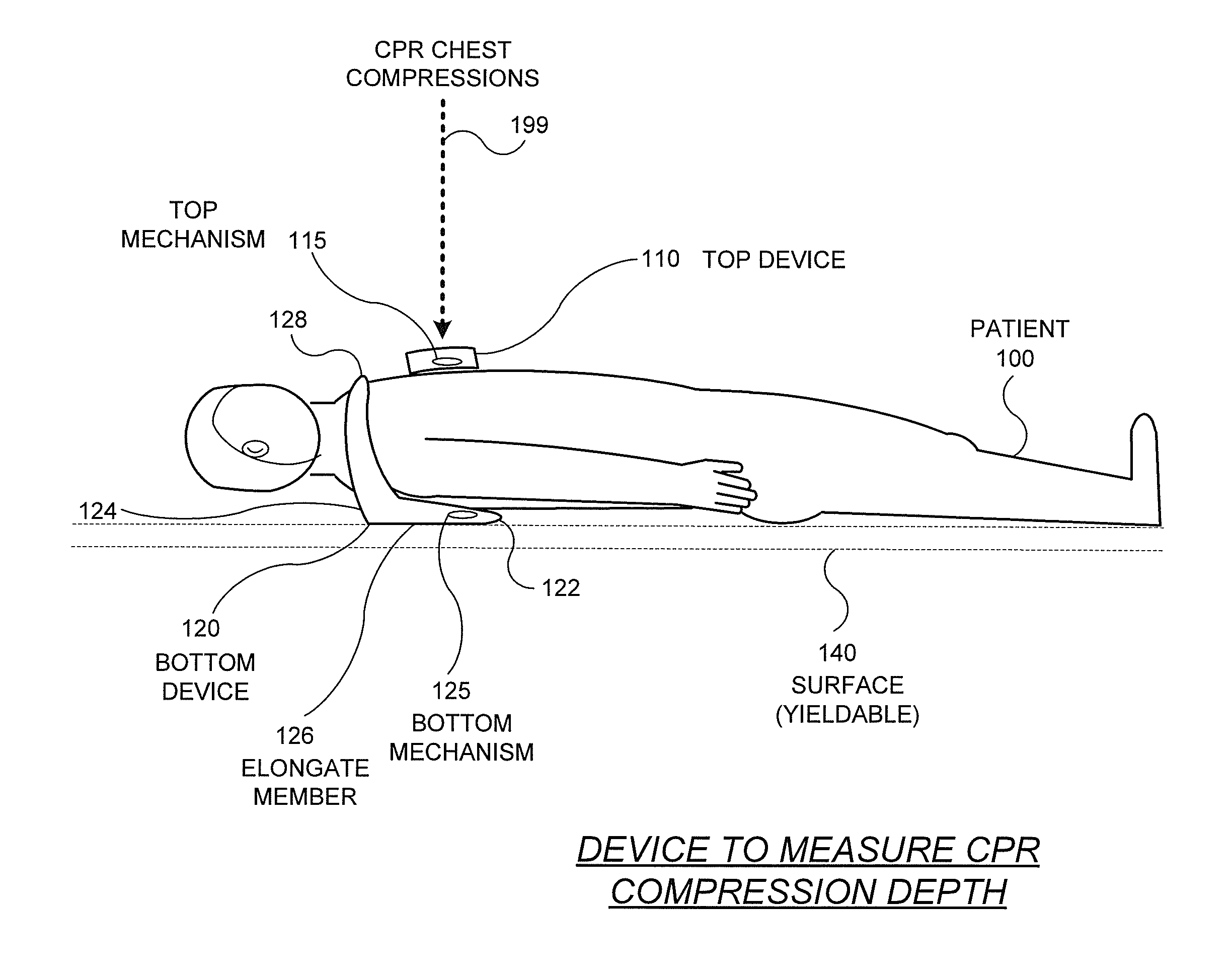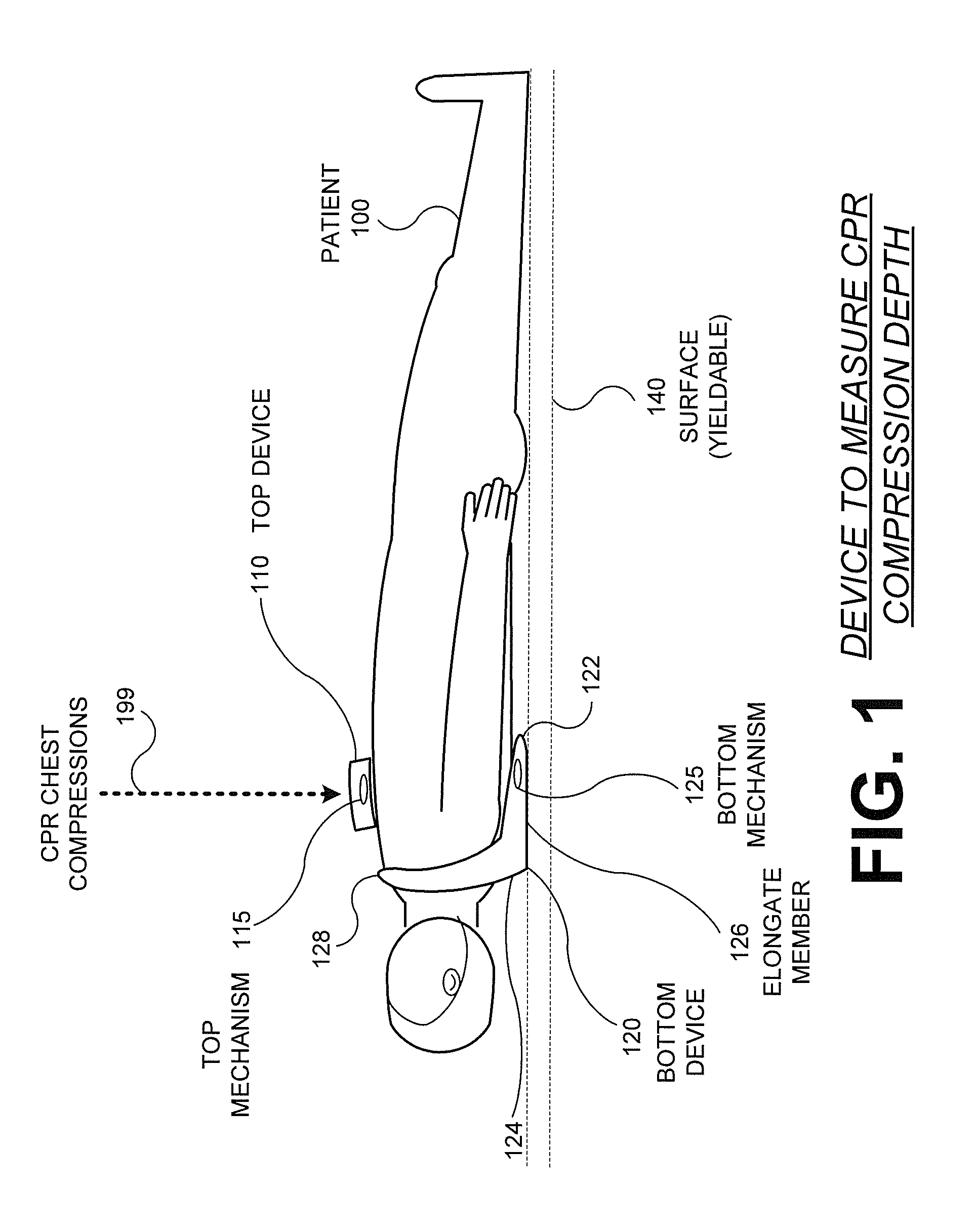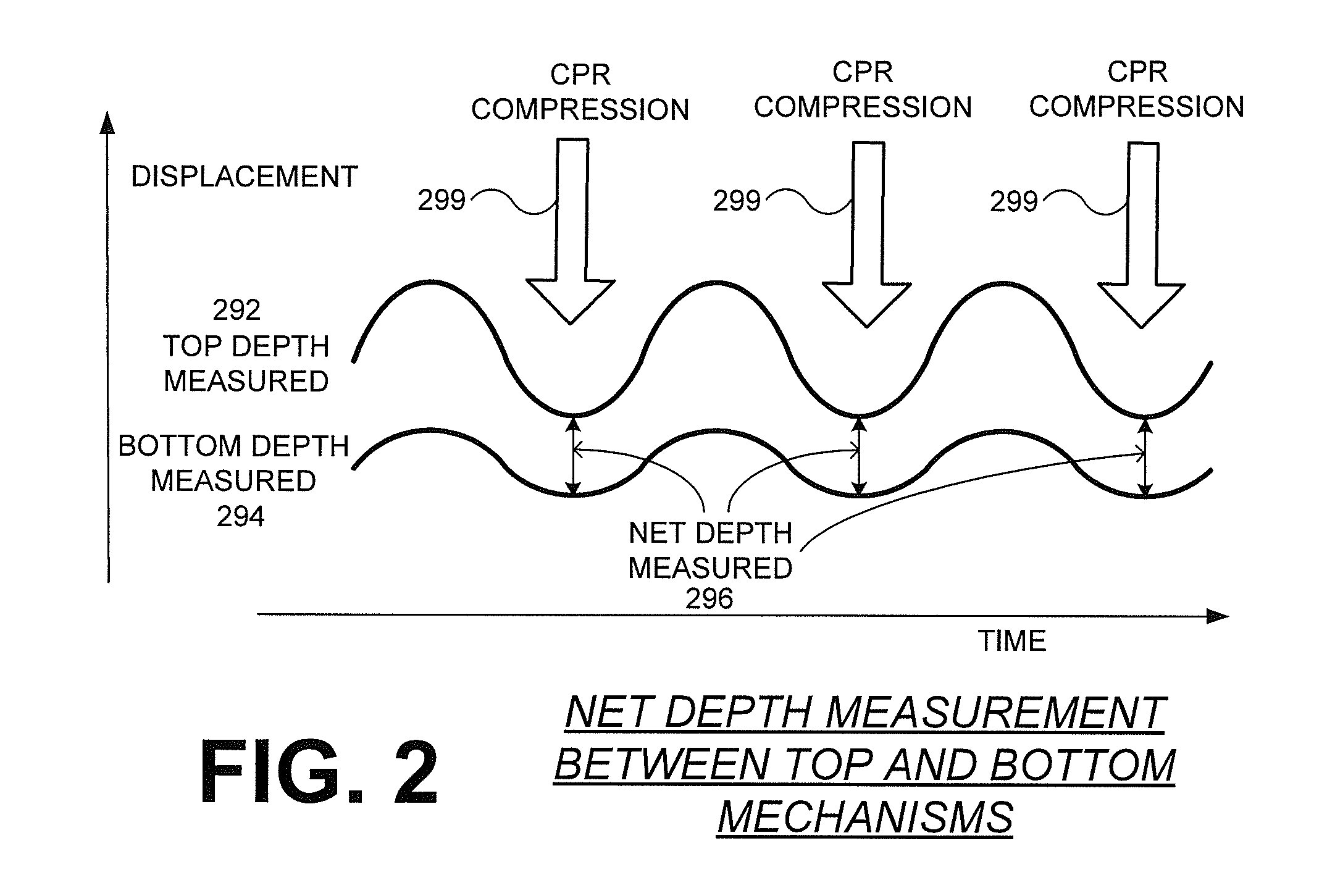Reference sensor for CPR feedback device
a technology of a reference sensor and a feedback device, which is applied in the field of medical devices, can solve the problems of reducing the amount of blood pumped to the various parts of the body, irregular heart beating, and not at all, and achieves the effect of correcting any errors in treatment and facilitating the application of cpr
- Summary
- Abstract
- Description
- Claims
- Application Information
AI Technical Summary
Benefits of technology
Problems solved by technology
Method used
Image
Examples
Embodiment Construction
[0030]As has been mentioned, the present description is about medical devices, control systems, software and methods for measuring the depth of Cardio Pulmonary Resuscitation (CPR) chest compressions delivered to the chest of a patient.
[0031]Embodiments are now described in more detail.
[0032]FIG. 1 is a diagram of a cooperating pair of medical devices structured to measure CPR compression depth according to embodiments. The pair of medical devices includes a top device 110 and a bottom device 120 that work cooperatively to provide a net compression depth of CPR chest compressions 199. For illustrative purposes, FIG. 1 shows a rescue scene where a patient 100 needing CPR is placed face up on a surface 140. The surface 140 may be any type of surface where treatment can be provided. These surfaces 140 are often not completely rigid and fixed, and hence have some yield or flex when force is applied to them. For example, a patient 100 may be placed on carpet, a padded medical stretcher, ...
PUM
 Login to View More
Login to View More Abstract
Description
Claims
Application Information
 Login to View More
Login to View More - R&D
- Intellectual Property
- Life Sciences
- Materials
- Tech Scout
- Unparalleled Data Quality
- Higher Quality Content
- 60% Fewer Hallucinations
Browse by: Latest US Patents, China's latest patents, Technical Efficacy Thesaurus, Application Domain, Technology Topic, Popular Technical Reports.
© 2025 PatSnap. All rights reserved.Legal|Privacy policy|Modern Slavery Act Transparency Statement|Sitemap|About US| Contact US: help@patsnap.com



